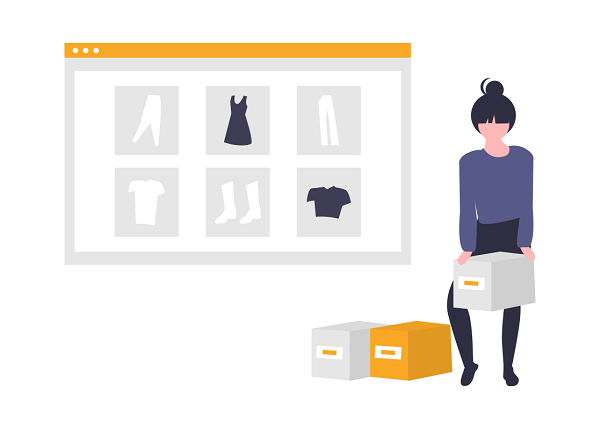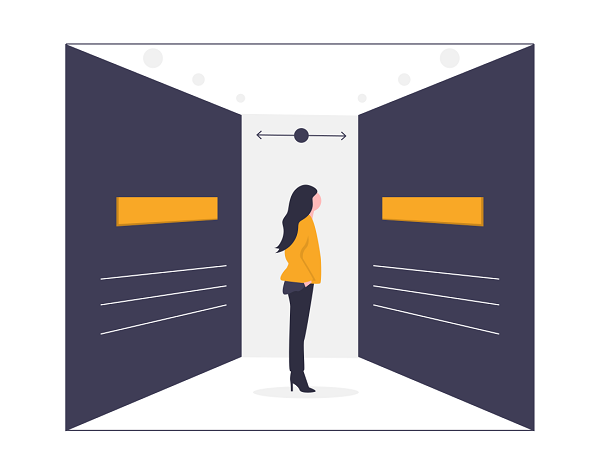How the expected crisis will affect online retailers?
Did you know that over 87% of shopping journeys start online now? Well, at least that was before the coronavirus outbreak. Now, with social distancing and countries being in lockdown, there is a massive opportunity in how retailers can invest in optimizing their online stores.
There is an often-used narrative that today’s consumers are more demanding, more willing to research, and definitely more impatient. It seems that retailers got a better understanding of this trend in comparison to the physical stores, but the virus is changing the ways of doing business as we know it.
So, how the expected crisis will affect business for retailers?

Every day we hear about the predictions about the effects that coronavirus will have on the global economy. There is no country that hasn’t already started devising measures to help its economy with the aim of mitigating the consequences as much as possible. Measures most often involve a number of subsidies for those sectors most affected by the situation – but since there is no free lunch, a global recession is expected. The only difference is the extent to which countries will be affected by the recession. In the case of retailers, the purchase price can be expected to increase, as well as the operating costs. Therefore, it’s not hard to guess that the competition will answer by increasing the prices.
What retailers should do?
What does this mean for retailers, and for customers as well? As we said, different markets will be affected differently, but there are some general guidelines that could be useful regardless of the industry branch you’re part of.
1. Keep a close eye on your competitors’ price changes
Basically, there are two ways of approaching this situation:
- Some retailers will increase the selling price as soon as the purchase price is increased;
- Other retailers will wait, trying to secure a better market position for themselves.
There is no universal solution for everyone. One approach might be a better fit for one retailer, and another approach can also be the winning strategy for someone else. Either way, you have to be aware of those changes, so that you don’t fall behind.
2. More uncertain situation – more cautious customers
Regardless of the industry type that some research is about, the common ground is always the same – consumer confidence became a central problem for physical stores and an advantage for eCommerce. The Internet gives customers the possibility to regain confidence by researching and finding the best deals. Crisis or not, people love the opportunity to feel that they have control over something. Did you know that 91% of online buyers use the Internet because researching products online before buying makes them feel more confident about their purchases? They feel that there are slimmer chances for them being tricked since they’ve dedicated time to do proper research and find the best possible deal.

With measures for social distancing, customers are in a way almost obliged to buy online, but that doesn’t mean that they are less careful. The Internet provides a set of information related to a particular product, but that information is also available to other retailers as well. Therefore, the market becomes more competitive and retailers must be astute when fighting for new customers and markets.
3. The importance of repricing
In the eCommerce environment price is one of the most influential aspects of the purchase decision, yet it can be susceptible to changes. That’s why you need to have a well-developed repricing strategy. In moments like these, when the world is in constant change due to coronavirus outbreak, it’s essential that retailers don’t make hasty decisions. To achieve this is not only enough to think of a smart pricing strategy, but also to find a proper competitive intelligence tool which will help you generate smart prices.
In Price2Spy, we have developed 3 default types of repricing opportunities that we can help you with:
- Clever drop – by using clever drop you’ll see what overpriced products where your purchase price and profit margin allow a somewhat lower price are. This functionality remains as vital as it was up to now. But, there is another feature that might come even more useful, and that is Clever raise.
- Clever raise – based on our experience, retailers have so far usually opted for the Clever drop, but this trend seems to be shifting. Clever raise shows you the products where your price is already the lowest on the market, but way too underpriced compared to your next cheaper competitor.
- Stock opportunities – besides deciding on the price, it’s equally important to know if your competitors have some product in stock or not, in order to be able to compare yourself to them.
Conclusion
To sum up, retailers are affected by this situation as well as all the other participants in the worlds’ economy. Here, we tried to summarize some of the smartest ways to get your self out of this situation. By getting rid of manual calculations, and by being more aware of your competition and customers’ actions, your results will amazingly increase. To make this process even easier and more seamless, you should team up with price intelligence software like Price2Spy.
We are aware that in these times of crisis, it is hazardous to set aside money for new ventures, and therefore Price2Spy offers a free trial!
If you are a retailer, please feel free to share the experience you’ve had so far. Maybe you’ll give us some ideas for new projects which could benefit everyone!



